Scotland weather: Met Office warnings pass 400 mark
- Published
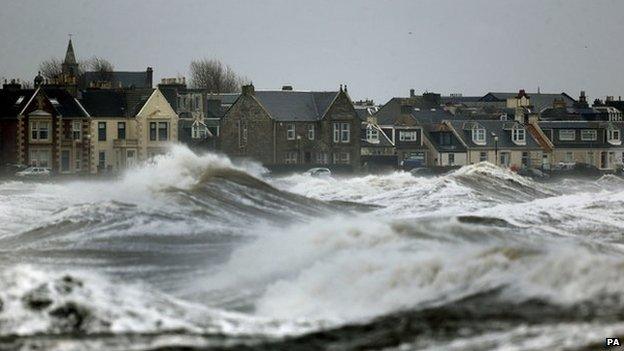
The Met Office said it was "very happy but not complacent" about how its warning system was working
More than 400 weather warnings have been issued for Scotland by the Met Office since a new system was brought in less than three years ago.
It translates to an average of more than 12 per month since April 2011.
The Met Office said it was "very happy but not complacent" that the system was providing the "best service possible".
It said it recognised the risk that the public might start to ignore warnings due to their number but stressed they were only issued when necessary.
The system has three levels - yellow "be aware" warnings, amber for "be prepared" and red "take action" alerts.
Most of the warnings issued since 2011 have been at the lowest level, with just three at the top end of the scale.
All of the red warnings came within the first year of the system's operation in August and December 2011 and January 2012.
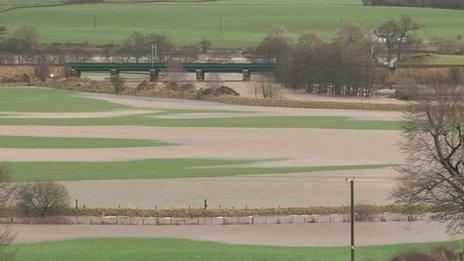

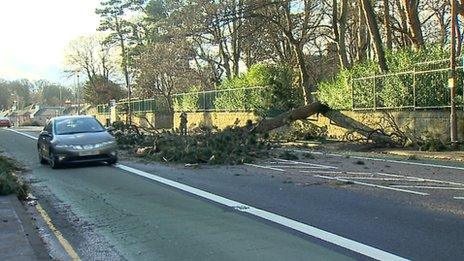
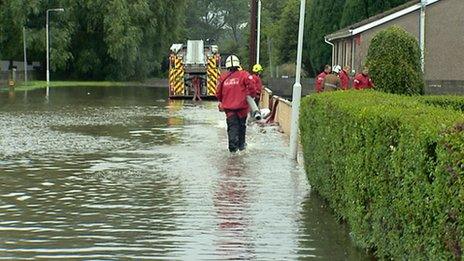
The worst month on record was December 2012 which saw 44 weather warnings issued alone.
Helen Chivers, from the Met Office, said it believed people appreciated the way the system worked.
"We carry out lots of surveys both with the public and the responder community to ensure that it is delivering the best service possible," she said.
"All indications are that both the public and the responders find it is an effective and useful service."
However, the organisation recognised there was a risk people might start to ignore them if they were issued too often.
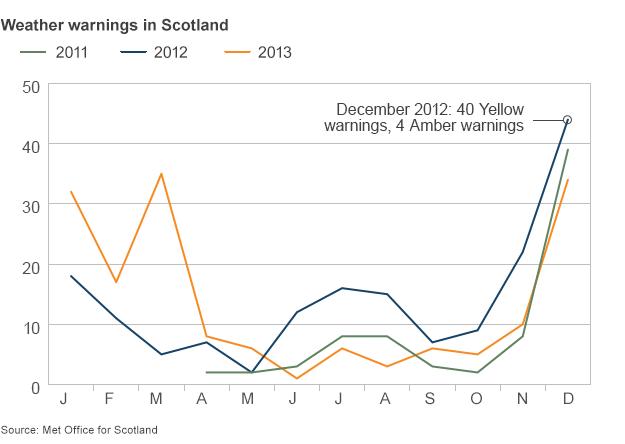
"There is always that possibility but we believe that we only issue warnings when it is necessary," Ms Chivers said.
"Also, there is a much smaller number of the most serious levels and our research shows that the public takes these very seriously and takes action upon them.
"One weather event usually results in a number of updated warnings over a period of several days as we get more confident in the detail and severity, so to just look at the literal number is not the full story."
She added that it was important to realise a range of factors went into deciding the level of alert issued.
"The colour of the warning does not just represent the expected severity of the weather," she explained.
"It represents a combination of the likelihood of it occurring and the impacts it may cause.
"Obviously the more severe the weather, the more serious the impact but a yellow warning can indicate a very low likelihood of very high impacts as well as a high likelihood of some low level impacts."
Ms Chivers said the Met Office was the only meteorological service currently issuing warnings based on "expected impacts".
"It is also worth bearing in mind that the same weather can have very different impacts depending on where or when it occurs," she added.
The Met Office carries out an ongoing programme to consult with the public and those in other services to fine tune and improve the service.
A full guide on the warning system, external is available on its website.
- Published7 January 2014
- Published3 January 2014
- Published3 January 2014